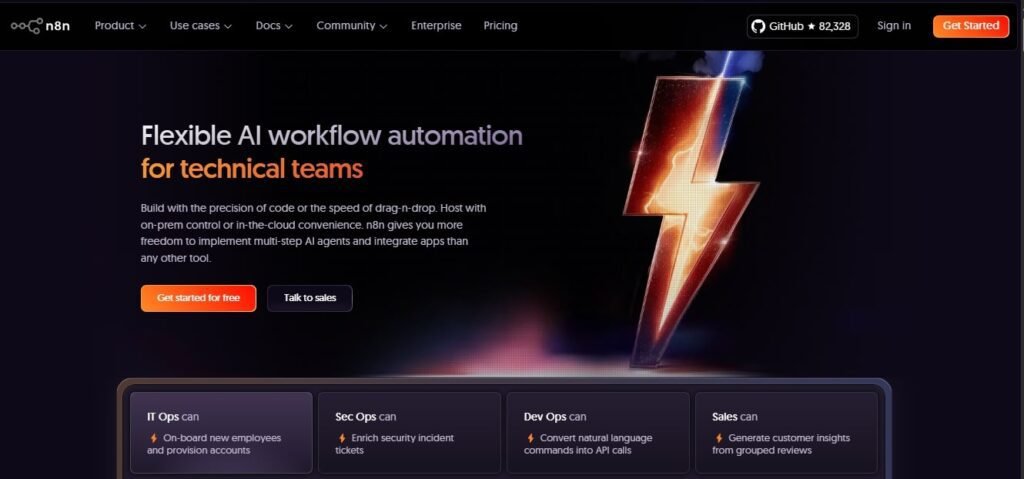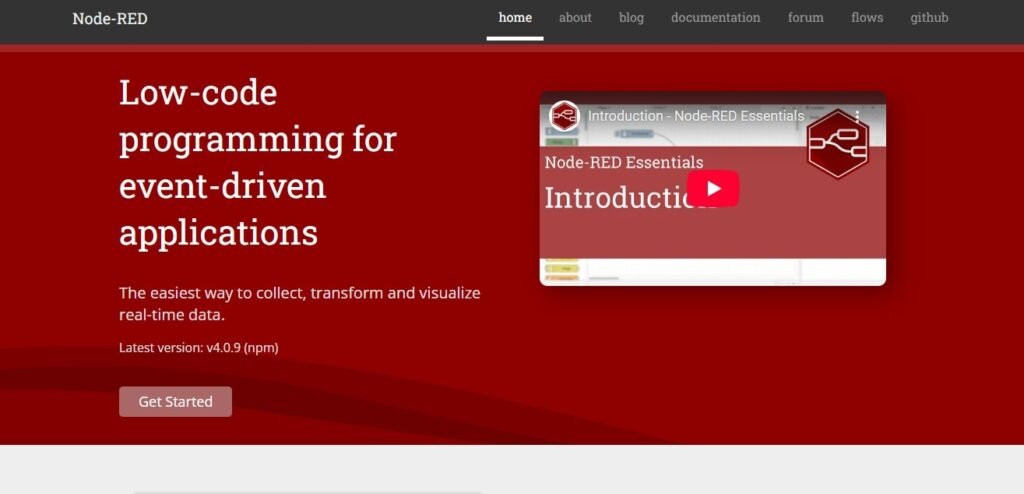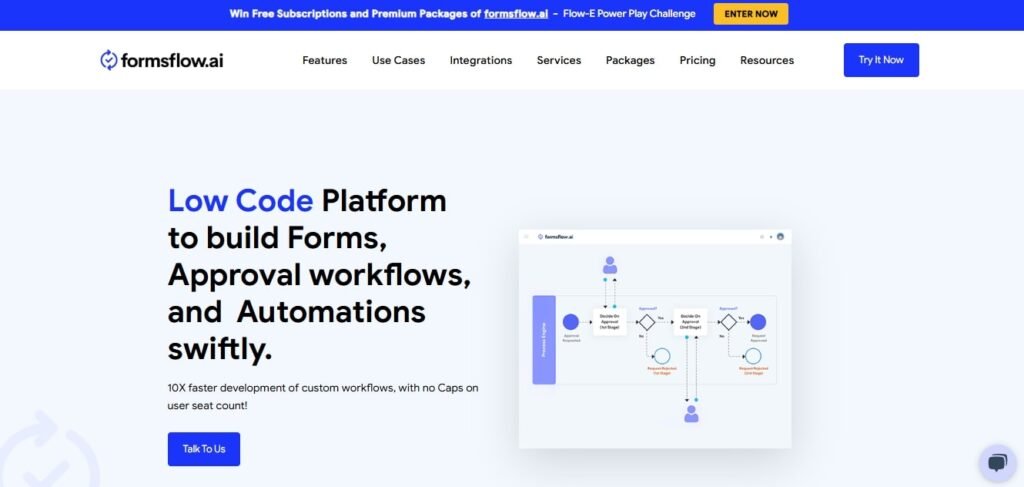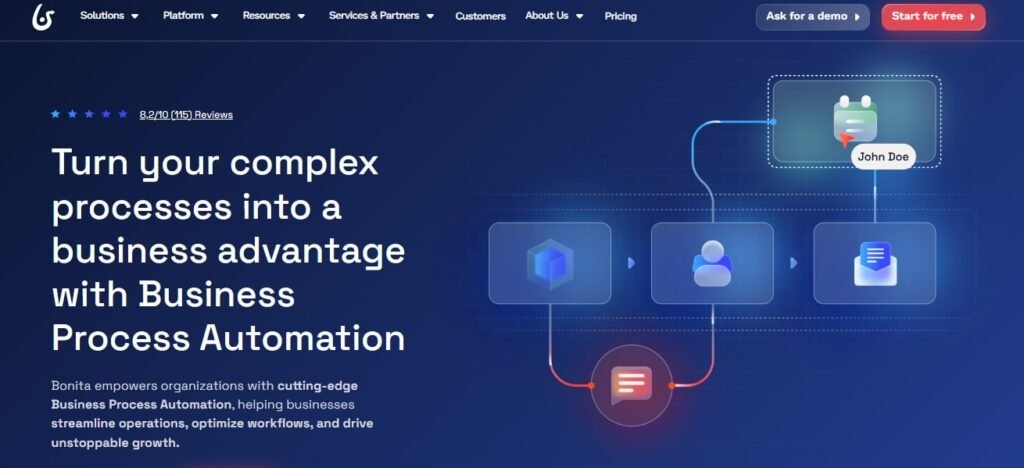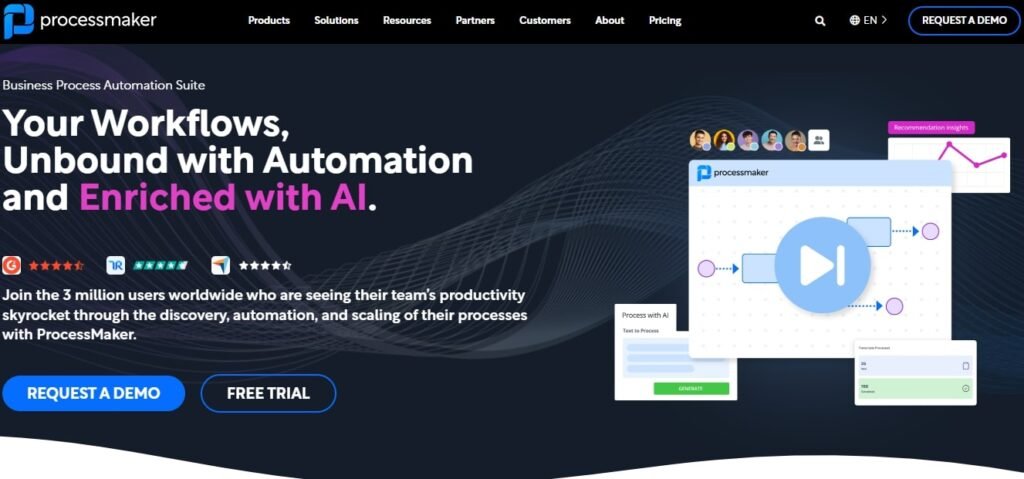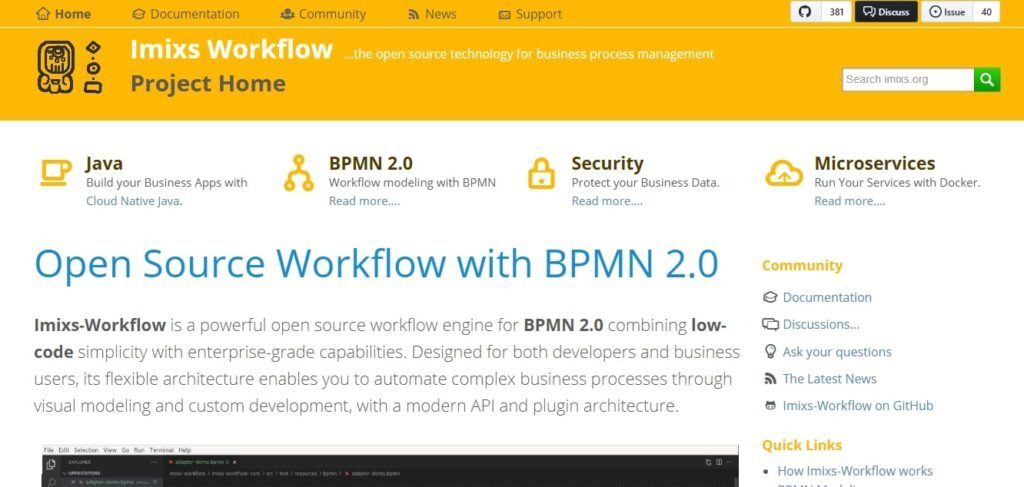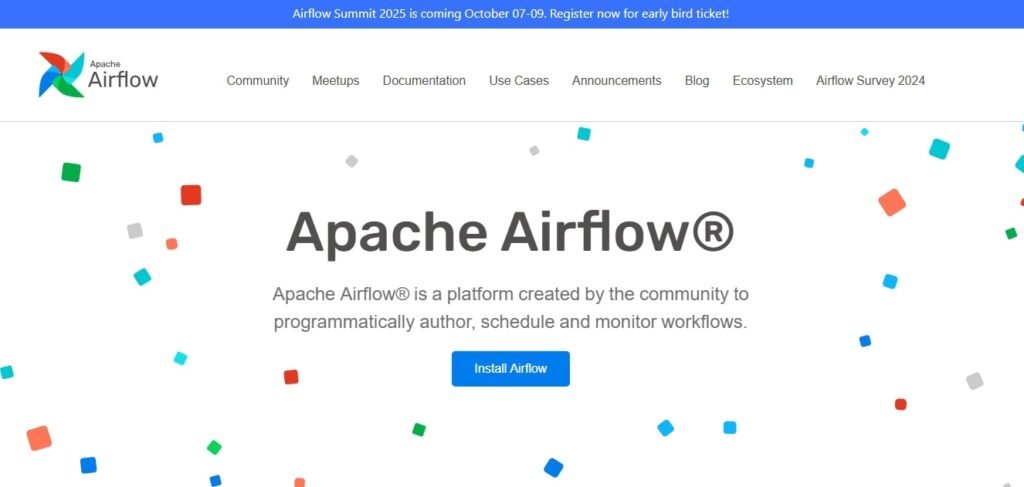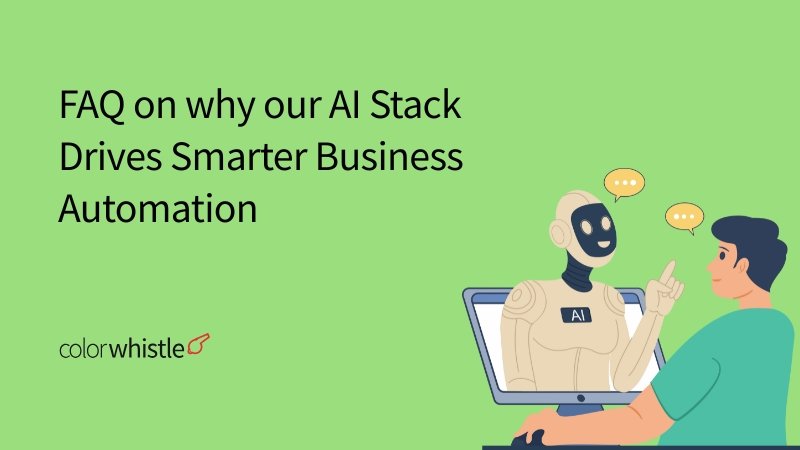When it comes to building custom platforms, be it a SaaS product, enterprise solution, or tailored internal tool, efficiency is everything. That’s where open-source workflow automation tools come into play. These tools offer the power to streamline repetitive tasks, boost team productivity, and scale processes across departments like marketing, sales, IT, and customer support.
But here’s the twist: we’re not talking about generic, one-size-fits-all automation. We’re diving into custom workflow automation solutions that can be fine-tuned, extended, and fully owned. For custom platforms aiming to automate smarter, open-source tools lead the pack, offering unmatched flexibility, full transparency, and budget-friendly scalability.
Whether you’re building something from scratch or optimizing an existing system, this blog explores the top open-source tools that can transform how your platform runs behind the scenes.
TL;DR
This blog is for SaaS teams, product owners, and tech leads looking to integrate flexible, open-source workflow automation into their custom platforms without the limitations of closed systems.
- A curated list of top open-source workflow automation tools tailored for custom platforms
- Tools organized under 4 key categories:
- Lightweight Automation & Integration (e.g., n8n, Node-RED)
- Enterprise BPM & Business Process Automation (e.g., Camunda, Bonitasoft)
- Data & DevOps Orchestration (e.g., Apache Airflow, Joget)
- Project Workflow Management (e.g., Taiga.io)
- Each tool includes a quick overview, pros & cons, and use-case fit
- Bonus: Integration highlights and “best for” suggestions to guide your decision
Category 1: Lightweight Open-Source Workflow Automation & Integration Tools for Custom Platforms
n8n – Extendable low-code automation
n8n (short for “nodemation”) is an open-source, low-code workflow automation tool designed for developers and advanced users who want more than just drag-and-drop simplicity. Unlike many no-code platforms, n8n gives you complete flexibility to build custom workflows that can run on your own server, ensuring privacy and full control.
It supports conditional logic, branching, loops, and custom JavaScript functions making it perfect for complex integrations across your custom platform. Whether you’re syncing data between apps, automating backend tasks, or creating event-based workflows, n8n makes it all possible without vendor lock-in.
Pros of n8n
- Open-source with self-hosting option for full control
- Easily extendable with custom JavaScript function nodes
- Drag-and-drop interface that’s developer-friendly
- Supports advanced logic like IF conditions and loops
- Native integrations with 200+ apps and services
Cons of n8n
- Steeper learning curve for non-technical users
- UI may get overwhelming with large, complex workflows
Bonus Sprinkle
- Best For: Developer teams and SaaS platforms looking for a powerful, flexible automation engine without losing control over data
- Integration Highlights: GitHub, Slack, Notion, Google Sheets, Webhooks, PostgreSQL, Airtable, and more
Node-RED – Open-Source Event-Driven Workflow Automation for Custom Integrations
Node-RED is a visual programming tool built for wiring together devices, APIs, and online services in a flow-based environment. Developed by IBM, it’s especially popular in IoT and edge computing, but its real magic lies in its event-driven approach that fits beautifully into custom platforms needing real-time or rule-based automation.
With a browser-based flow editor, users can quickly create logic workflows by connecting “nodes” (which represent functions, APIs, or data handlers). It’s built on Node.js, so developers can easily add custom functions, making it perfect for highly tailored use cases from internal tools to enterprise-level app integrations.
Pros of node-RED
- Visual, flow-based UI for fast prototyping
- Great for real-time data and event-driven systems
- Built on Node.js – easily extendable with JS
- Active open-source community + solid documentation
- Lightweight and runs well on devices like Raspberry Pi
Cons of node-RED
- The UI might be too simple for bigger or more complicated systems
- Some learning curve for those unfamiliar with event-driven architecture
Bonus Sprinkle
- Best For: IoT setups, internal tools, real-time event handling in custom apps
- Integration Highlights: MQTT, WebSocket, HTTP APIs, databases, cloud platforms (AWS, Azure), and more
Formsflow.ai – AI-Powered Open-Source Workflow Automation for Forms & Approvals
Formsflow.ai is an open-source solution that blends form creation, workflow automation, and analytics into one integrated platform. Designed with low-code/no-code principles, it allows teams to build dynamic forms, route submissions through approval workflows, and gain insights through powerful dashboards all without writing heavy backend code.
It’s especially handy for custom platforms that need to digitize manual processes, collect structured data, and automate approvals or task assignments. The visual interface makes it approachable for non-tech teams, while developers still have room to customize workflows under the hood.
Pros of Formsflow.ai
- Seamless combo of forms, workflows, and analytics
- Open-source and free to self-host
- Low-code UI with visual workflow designer
- Easy integration with external APIs
- Role-based access control and task tracking
Cons of Formsflow.ai
- Setup requires containerized environment (Docker/Kubernetes)
- Might be too structured for more dynamic or developer-driven projects
Bonus Sprinkle
- Best For: Government orgs, enterprises, or SaaS tools needing form-based process automation
- Integration Highlights: Keycloak (auth), Camunda (workflow engine), Redash (analytics), and REST APIs
Also Read
Category 2: Enterprise-Ready Open-Source Workflow Automation Tools for BPM & Business Process Management
For custom platforms that operate at scale or need compliance-ready, complex process orchestration Business Process Management (BPM) tools are the go-to. These platforms offer advanced control over workflows, task assignments, decision models, and audit trails. Perfect for enterprise-grade SaaS tools, internal ops platforms, or any system where workflows need to be structured, monitored, and optimized with precision.
Camunda – Best Open-Source Workflow Automation Tool
Camunda is a powerful open-source process automation platform that revolves around the BPMN 2.0 standard. Unlike low-code platforms, Camunda is developer-first, built for teams that want to model, deploy, and manage highly structured business processes with full flexibility.
It supports workflow automation, case management, and decision modeling (DMN). You can embed it as a microservice, scale with Kubernetes, and tap into REST APIs for seamless integration into your custom apps. Camunda shines in complex use cases think loan approvals, insurance claims, onboarding flows, or any business process that needs transparency and auditability.
Pros of Camunda
- Open-source and enterprise-ready
- Standards-based: BPMN 2.0, DMN, CMMN
- Excellent documentation and developer tools
- Scalable architecture for microservices + cloud-native deployments
- Strong focus on compliance, monitoring, and analytics
Cons of Camunda
- Requires developer resources to implement and manage
- Not suitable for non-technical users out-of-the-box
Bonus Sprinkle
- Best For: Enterprise software, fintech platforms, or large orgs needing strict process control
- Integration Highlights: REST APIs, Kafka, Spring Boot, Java SDKs, Kubernetes, and custom services
Bonitasoft – Open-Source Workflow Automation Tool
Bonitasoft (or just Bonita) is an open-source BPM platform that strikes a sweet balance between visual modeling and backend extensibility. It’s got a drag-and-drop process designer for business teams and a powerful extension layer for developers making it super flexible for building rich, scalable process applications on custom platforms.
Whether you’re automating a claims approval flow, HR onboarding, or a complex multi-department process, Bonita helps you orchestrate it visually while allowing you to plug in custom scripts, integrations, and UI components. You can also build full apps with custom pages and business logic right inside Bonita Studio!
Pros of Bonitasoft
- Full-featured visual BPMN 2.0 designer
- Extendable with custom scripts, connectors, and UI
- Open-source core with optional enterprise tools
- App-building support with Bonita UI Designer
- Good fit for both business and tech teams
Cons of Bonitasoft
- Initial setup/config can be complex
- Some features gated behind enterprise edition
Bonus Sprinkle
- Best For: Businesses wanting a visual-first yet customizable BPM solution
- Integration Highlights: REST APIs, custom connectors, LDAP, databases, third-party services (via extension points)
ProcessMaker – Low-code for enterprise workflows
ProcessMaker is a low-code BPM platform built to help enterprises streamline complex workflows without drowning in code. With its intuitive drag-and-drop process modeler and form builder, it empowers teams to rapidly digitize approvals, reviews, and escalations while still letting devs customize things under the hood.
What sets it apart is how quickly you can go from process idea to deployment, especially for workflows involving multiple departments or systems. It offers a modern UI, strong reporting capabilities, and native support for process analytics and SLA tracking making it a solid pick for custom internal tools or client-facing platforms with workflow logic.
Pros of Processmaker
- Easy-to-use low-code process builder
- Great for multi-step, cross-team enterprise workflows
- Advanced user management and role-based access
- Visual reporting and SLA tracking
- Open-source core available
Cons of Processmaker
- Some powerful features are enterprise-only
- Customization needs dev support for complex flows
Bonus Sprinkle
- Best For: Enterprises needing fast deployment of internal/external workflows
- Integration Highlights: REST APIs, scripting (JavaScript & PHP), database integrations, and connectors to ERP/CRM tools
Imixs-Workflow – Java-based, BPMN-compliant engine
Imixs-Workflow is an open-source Java-based workflow engine that supports the BPMN 2.0 standard for modeling business processes. What makes it special is its tight integration with the Java ecosystem making it ideal for Java developers building secure, enterprise-ready custom platforms.
Unlike visual drag-and-drop tools, Imixs is code-first and gives you fine-grained control over how processes behave, including state transitions, permissions, event handling, and audit logs. You can embed it in Jakarta EE, Spring Boot, or use it as a standalone service making it flexible for both microservices and monoliths
Pros of Imixs-Workflow
- Fully open-source and actively maintained
- Standards-compliant (BPMN 2.0)
- Seamless integration with Java-based platforms
- Strong security, audit trail, and access control
- Flexible deployment models (embedded or standalone)
Cons of Imixs-Workflow
- Geared for Java devs not beginner-friendly
- Lacks visual UI for business users
Bonus Sprinkle
- Best For: Java-heavy enterprise platforms that need custom, secure workflow automation
- Integration Highlights: REST APIs, Jakarta EE, Spring Boot, JPA, full Java support
Also Read
Category 3: Data & DevOps Workflow Orchestration
This category includes tools that handle the heavy lifting behind data processing and infrastructure automation. They’re ideal for platforms that need to schedule, monitor, and manage complex workflows especially in data engineering and DevOps environments. These tools help streamline ETL jobs, automate backend tasks, and keep everything running in sync. Perfect when your platform needs precision and scalability under the hood.
For teams working on data pipelines, backend tasks, or scheduled workflows.
Apache Airflow – Complex, Python-based DAGs
Apache Airflow is an open-source powerhouse for orchestrating complex workflows using Python-based DAGs (Directed Acyclic Graphs). Originally developed at Airbnb, it’s become the go-to tool for building and managing data engineering and DevOps pipelines that require fine-tuned control and scalability.
You define tasks as Python code, and Airflow schedules and executes them based on time, dependencies, or external triggers. It’s especially strong when dealing with ETL jobs, ML workflows, or multi-step deployment processes. And with its extensible plugin system, you can connect to everything from S3 to Kubernetes.
Pros of Apache Airflow
- Code-first: Define workflows using Python
- Handles complex dependencies with DAGs
- Scalable and production-ready
- Broad integrations with data/cloud services
- Active community & great ecosystem
Cons of Apache Airflow
- Steeper learning curve for beginners
- UI can feel clunky without customization
Bonus Sprinkle
- Best For: Data platforms and DevOps teams needing precise orchestration
- Integration Highlights: AWS/GCP/Azure, Docker, Kubernetes, Spark, SQL, SFTP, REST APIs
Joget – Full-stack low-code + workflow builder
Joget is a full-stack low-code platform that combines app development, workflow automation, and process management in one open-source package. It’s built for teams that want to automate business workflows and create custom interfaces without starting from scratch.
From designing workflows with a visual builder to integrating databases and APIs, Joget covers both frontend and backend needs. Its plugin architecture and support for scripting also make it flexible enough for more technical users who want to extend capabilities beyond drag-and-drop.
Pros of Joget
- All-in-one platform for app + workflow development
- Visual builder with drag-and-drop ease
- Works with REST APIs and outside databases
- Extendable through plugins and scripting
- Active community and good documentation
Cons of Joget
- Might be too feature-heavy for simple use cases
- Enterprise-grade features may require a learning curve
Bonus Sprinkle
- Best For: Teams building internal tools with automation + UI needs
- Integration Highlights: REST APIs, MySQL/PostgreSQL, LDAP, JasperReports
Category 4: Project Workflow Management
When building custom platforms, managing team tasks, sprints, and collaboration workflows is just as important as automating backend processes. That’s where project workflow management tools come in they help teams stay aligned, track progress, and maintain momentum. These open-source solutions offer the flexibility to adapt workflows to your team’s rhythm, whether you’re following agile, kanban, or something in between. Ideal for teams that want to keep everything in one place while still customizing it to fit their needs.
Taiga.io – Agile project and task management
Taiga is an open-source project management tool tailored for agile teams. Whether you’re working with Scrum, Kanban, or a hybrid method, Taiga gives you a clean and customizable interface to manage user stories, sprints, issues, and team collaboration all in one place.
What makes Taiga stand out is its balance between simplicity and power. It’s beginner-friendly for teams just stepping into agile workflows, yet robust enough for more experienced users who want deep customizability and third-party integrations. With a slick UI and multilingual support, it’s a great fit for distributed teams working on custom platforms.
Pros of Taiga
- Intuitive interface with Scrum and Kanban support
- Customizable workflows and fields
- Supports epics, issues, sprints, and backlog views
- Free for small teams, self-hosted option available
- Active open-source community
Cons of Taiga
- Limited reporting/analytics out-of-the-box
- Advanced features need some configuration effort
Bonus Sprinkle
- Best For: Agile teams handling sprints and tracking issues
- Integration Highlights: GitHub, GitLab, Bitbucket, Slack, Webhooks, and REST API
Wrapping Up
For teams building custom platforms from SaaS products to internal enterprise tools choosing the right workflow automation software is more than a technical decision. It’s about driving efficiency, reducing overhead, and keeping systems adaptable as you scale.
Open-source workflow automation tools offer that sweet spot of flexibility and control, letting you customize processes without reinventing the wheel. Whether you’re a product team streamlining operations or a tech lead building for long-term agility, the right automation stack sets the foundation for growth.
Ready to turn your workflow into a competitive advantage? Let the automation begin.
Head over to our ColorWhistle page to find out about our top-notch services. If you want a more personal touch, just shoot us a message or give us a call at +1 (919) 234-5140, and we’ll get back to you right away.
What’s Next?
Now that you’ve had the chance to explore our blog, it’s time to take the next step and see what opportunities await!


